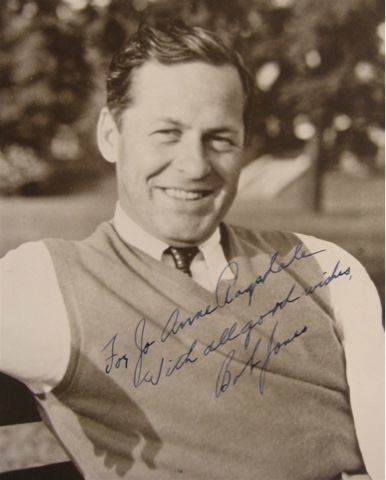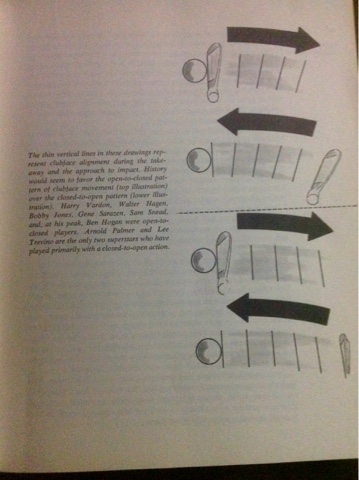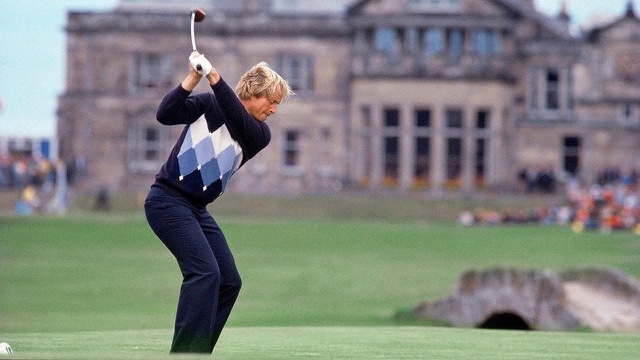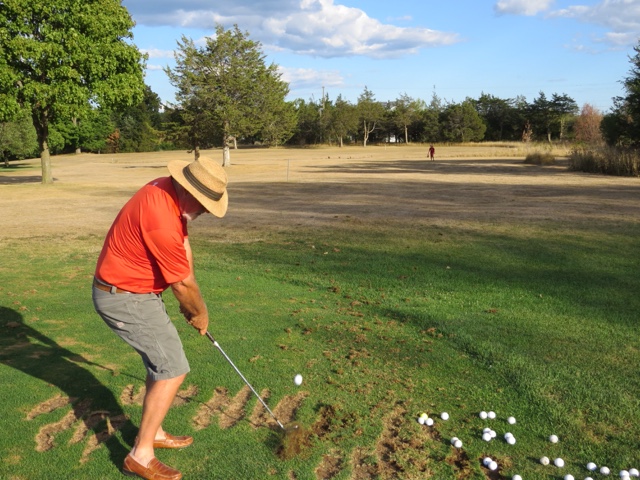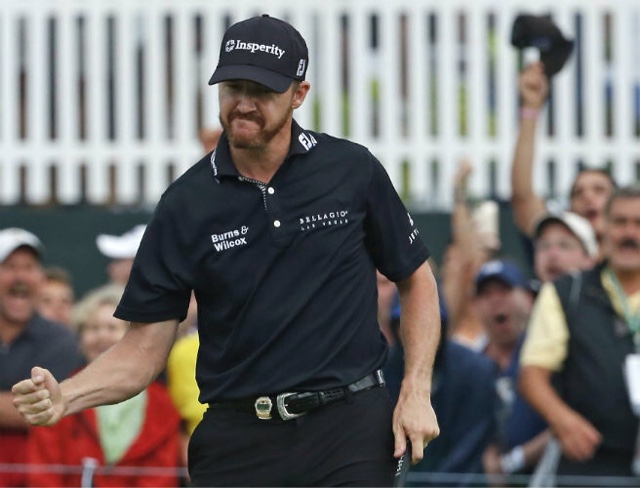I have spent much of my time writing about, and quoting sections from, the books of Bobby Jones. Way before my time, Bobby Jones was arguably the greatest player the game has ever seen. That he was adopted by the town of St Andrews, who referred to him as " our Bobby" should be reason enough to accept his brilliance. The Scots, and particularly the Scots from St Andrews, know their golf and their golfers.
But another golfer who may not have enjoyed the same beloved relationship with the townsfolk of St Andrews, but won an Open there, was Jack Nicklaus. I idolized Jack as a kid. My greatest golfing memories are of his win at St Andrews in 1970, and his Masters win in '86. He and Bobby will probably always rank as my top two golfing heroes.
And yet Bobby Jones and Jack Nicklaus couldn't have played the game much differently. Bobby played quickly. Jack was deliberate. Bobby had a flat swing and preferred to play a draw. Jack had a very upright swing and preferred to play a fade.
I grew up trying to swing like Jack. In fact, I rue the day I tried to change my swing to try to make it fit the modern rotational swing. But that's another story. The point is that Jack Nicklaus possessed a golfing mind equal to that of Bobby Jones. Both of those players were great champions as much, or more, because of their golfing minds as their swings.
In terms of golfing method, Jack Nicklaus in his book Golf My Way speaks to the inevitable debate about how to best swing the golf club. He writes:
"I realize only too well how hard it is to resist gimmicks. Friends of mine who should know better will often remark to me at a tournament about the apparent variation in swing styles among tour players. Superficially it may seem to be the case. On the practice tee they'll watch Lee Trevino on one side of me and Doug Sanders on the other, and later will invite my comment on our 'different' methods. Frequently their eye will have caught different mannerisms or quirks rather than basics, such as the player's grip or setup to the ball.
Swing techniques of my fellow tour players really isn't a subject that turns me on; when I get away from the course I like to forget golf. Thus I've developed an answer for my friends that usually allows us to change the subject fairly quickly. 'We may all get to impact a little differently,' I'll say, 'but at impact we're all the same--and impact is the bit that matters. If you watch a little more closely, I think you'll see this for yourself.'
This is not a conversational copout on my part. It is actually the crunch factor in any debate about method... The heart of the matter is that whatever style or shape or method of swinging a fellow adopts, if he can play golf at all, during impact he'll look pretty much like Lee Trevino, or Doug Sanders, or me, or any other good golfer you'd like to name. Whatever his legs, hips, hands, arms, shoulders, and head--and above all, his club--may be doing at other points in his swing, they'll be much the same as ours just before, at, and just after impact.
It is this controlled, specific impact position that any method worth adopting must be designed to achieve. Keep that in mind as you read this or any other golf book, or listen to anyone talking golf technique. Good methods are not designed to produce precise angles of the wrists, or photogenic top-of-the-backswing postures, or perfect follow-throughs. These and other like factors may be important, but only as a route to a broader goal. That goal is a particular relationship of the golfer to his club, and through that of his club to the ball, at impact."
Bobby Jones believed the same thing. His focus was always impact--how he wanted to strike the ball. He described his focus on impact as being "intense," when he was competing. We've got great models to copy when it comes to swinging the golf club. But don't forget what two of the greatest players of all time taught. It's all about impact. How you get there doesn't matter, as long as you get there.




